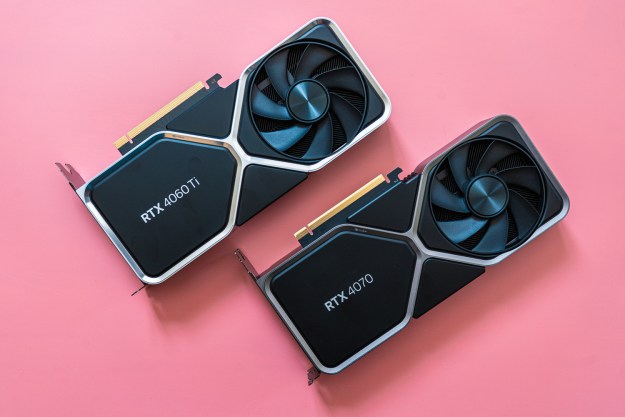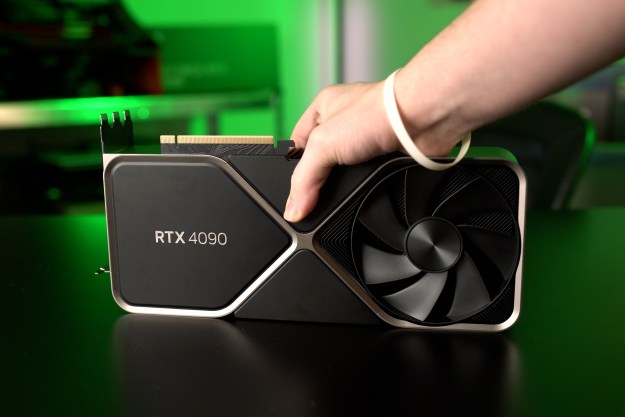
The GPU shortage was rough. It was the height of the pandemic, and all you could do was stay inside and play games, and yet, the cost of upgrading your graphics card was as much as buying a used car. Double or triple the list price of already expensive GPUs, and that was before you dealt with actually finding a place to buy one. I was fortunate enough to find one of the best graphics cards at list price, but most people didn’t.
Most people didn’t upgrade at all, at least if Steam hardware surveys from the last several months are anything to go by. I mean, the GTX 1060 is still the third most popular GPU on Steam, and that card is old enough to enter the third grade next year. The GPU shortage wasn’t fun for anyone, but it still has a lingering effect today.
Of course, I’m talking about high GPU prices, but you don’t have to look very far to see those. You can still feel the effects elsewhere. There are unrealistic performance expectations for hardware that’s closing in on a decade old, and there’s new tech that feels prohibitively expensive because so many PC gamers had to take an upgrade. The GPU shortage screwed everything up for PC gaming, and I’m not sure how we get out of it.
The price jump

We have to talk about price first because that’s the major point of contention as we close out the year. Yes, graphics cards are more expensive than they used to be. Each of Nvidia’s RTX 40-series GPUs is more expensive than the last-gen version of the same card, short of the RTX 4060 Ti and RTX 4060. In some cases, like the RTX 4070, the price hike is reasonable at around $100. In other cases, like the RTX 4080, it’s massive at around $500. It doesn’t matter one way or the other — this generation, you’re spending more money for the same class of graphics card.
It’s a dead horse, and I don’t want to beat it, but the issue is worth mentioning. AMD doesn’t have much of a spot in this conversation, either. Some cards are more expensive than the previous generation; others are less expensive.
In all reality, though, AMD’s lineup is priced in accordance with Nvidia. There are good deals, with AMD usually undercutting Team Green, but it doesn’t change the situation with GPU prices as a whole.
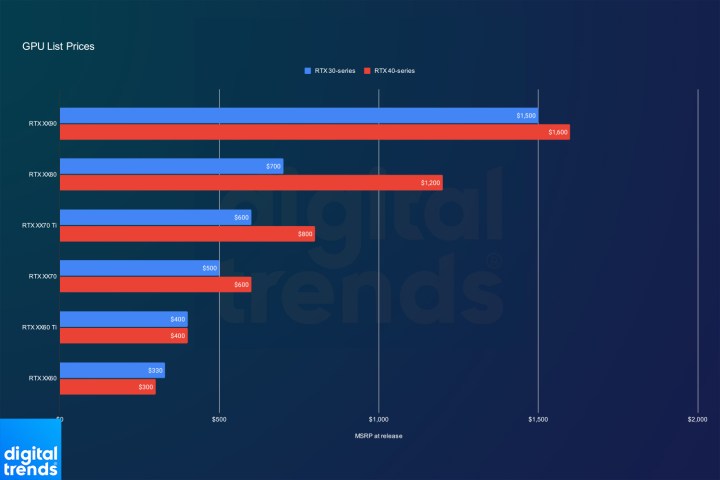
With less GPU for your dollar, upgrades are tough decisions. It’s not GPU shortage levels of tough, but it’s certainly harder than in generations past. I’m not pulling the greed card here. There’s inflation and conversations of Moore’s Law being dead, and yada yada. I don’t care about any of that. What I care about is that when you’re looking to upgrade in 2023, you’ll probably have to settle for a lower class of GPU compared to what you could in previous years.
It’s a problem with expectations. Two years ago, your $500 would buy you a certain level of performance. Now, it buys you less. Maybe you could rest on a GPU for five years previously. Now, there’s a new game every other month asking you to upgrade for the optimal experience. Nvidia and AMD have expectations of their own; expectations to hit certain marks for their earnings reports. And the GPU shortage definitively set a new bar for those.
An expectation problem
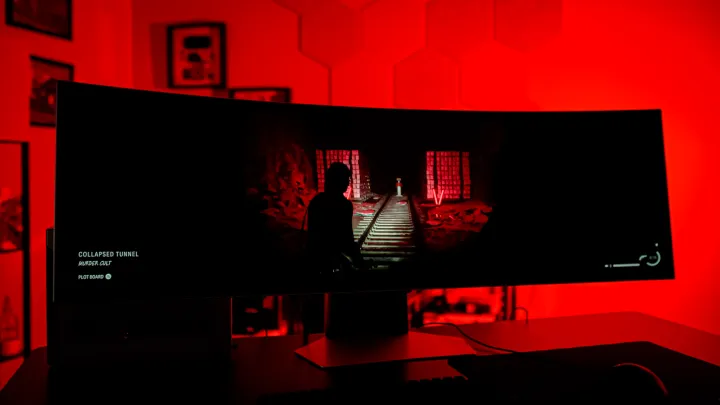
It’s not just a monetary expectation that’s the problem — be it consumers expecting a certain GPU for their dollar or shareholders expecting a certain return. There’s also an expectation problem with games and how they should challenge GPUs.
This became clear to me with Alan Wake 2. It’s one of the most beautiful games I’ve ever played, but unless you fork over some good cash for a GPU upgrade, you probably won’t be able to play it. It doesn’t explicitly require an RX 6000 or RTX GPU to run, but I wouldn’t spend $50 to roll the dice trying to play it on anything older.
There were pitchforks. Some PC gamers couldn’t stomach the idea that some popular cards were aging out of relevance. They expected that the cards would continue to work until they decided to upgrade. One brave Remedy employee tried to shed some light on the minimum system requirements ahead of the game’s launch, explaining why the game wouldn’t run on older GPUs. They, in their own words, “got scared and deleted” the tweet.
You can’t blame some PC gamers. Before the GPU shortage, we came off one of the best times for PC gaming. The PS4 and Xbox One were notoriously underpowered, even when they launched in 2013. Developers mostly restrained their games for those platforms. So yeah, a GPU from 2014 or 2015 could hold up, even up to the beginning of this year.
During the GPU shortage, why would you upgrade? A five or six-year-old GPU could still play ball. Why wouldn’t it be able to hold on for another generation?
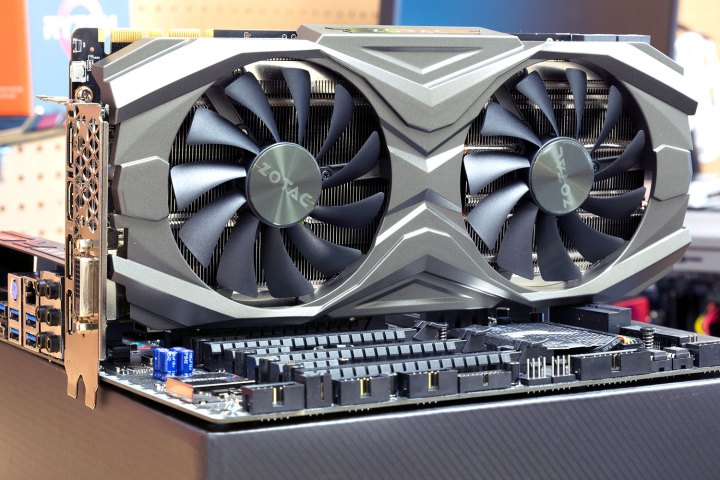
The GPU shortage put a delay on upgrades, and when faced with higher GPU prices once the cards were finally back in stock, I can only assume a chunk of PC gamers just wanted to get a little more life out of the cards that have been able to keep up for so long. I’m just assuming here, at least based on the Steam hardware survey and some discourse, but it’s not a crazy thought.
The expectations were much different for PC gaming years ago. You’d commonly have to upgrade your GPU to play a new game, and even the newest, fastest cards didn’t always put up the numbers. Here’s a review of the GTX 780 from Anandtech, where the card just barely passes 60 frames per second (fps) in Bioshock Infinite at 1440p — a game that released two months before the GPU.
Could you imagine the groundswell that would occur today if a flagship product barely held 60 fps in a modern game? It was a different time. The expectations weren’t what they are today.
No easy way out
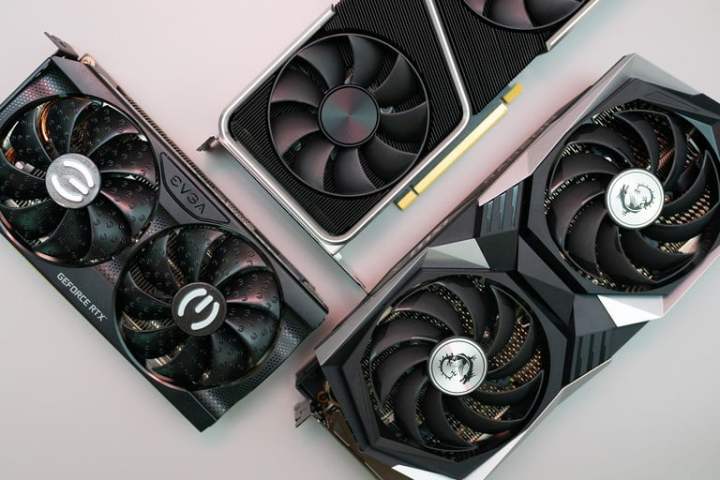
The concoction of a GPU shortage pushing upgrades back, a console generation finally catching up with gaming tech, and higher GPU prices have created a tough situation for PC gamers. You could balance any individual element out. We’ve seen higher GPU prices in the past, and we’ve lived through more than one GPU shortage. Of course, we’ve seen new consoles, as well, pushing visual quality forward for everyone. Right now, though, PC gaming is caught in a perfect storm of all three.
I’ve seen plenty of finger-pointing, and I’m sure you have, too. We could scapegoat until we’re blue in the face, but there’s not a single element of the situation with PC gaming today that’s to blame. There are multiple factors as a result of the GPU shortage, screwing things up for the PC gaming situation today.
I hope that, as the consoles start to age and new generations of GPUs arrive, it’ll be easier to afford a GPU upgrade. We’re still clawing our way out of the mess that the GPU shortage caused, but it’s clear that things are looking up.
Editors' Recommendations
- All of the exciting new GPUs still coming in 2024
- GPU prices are back on the rise again
- 5 GPUs you should buy instead of the RTX 4070
- This new GPU feature is ‘a whole new paradigm’ for PC gaming
- AMD needs to fix this one problem with its next-gen GPUs




